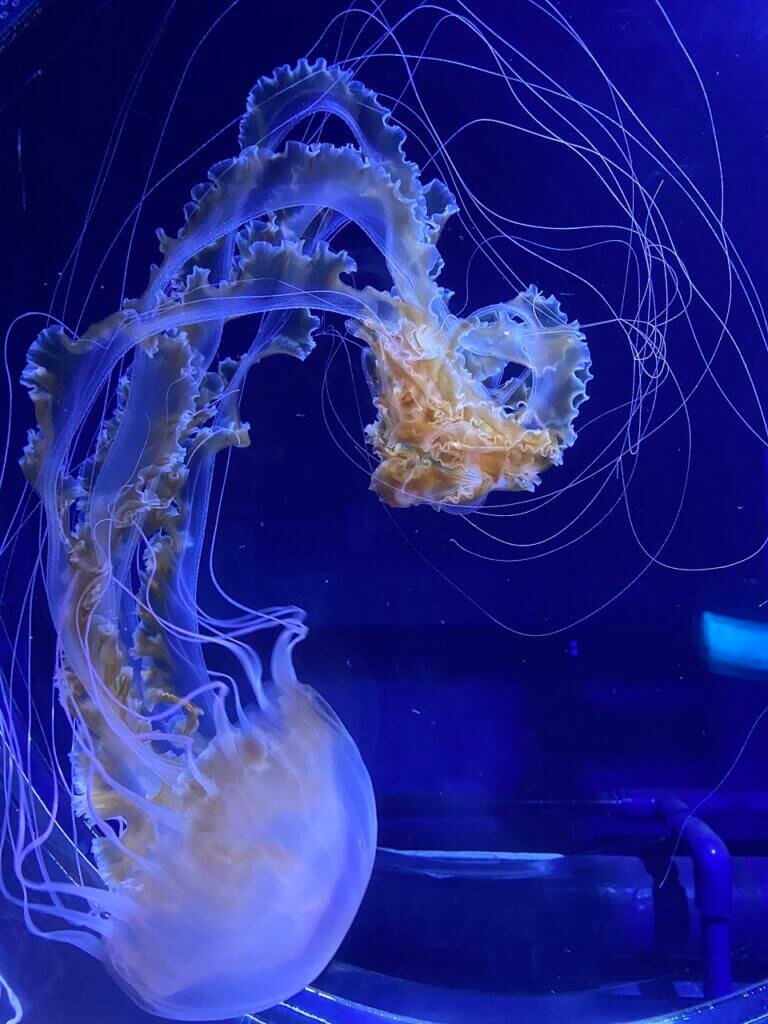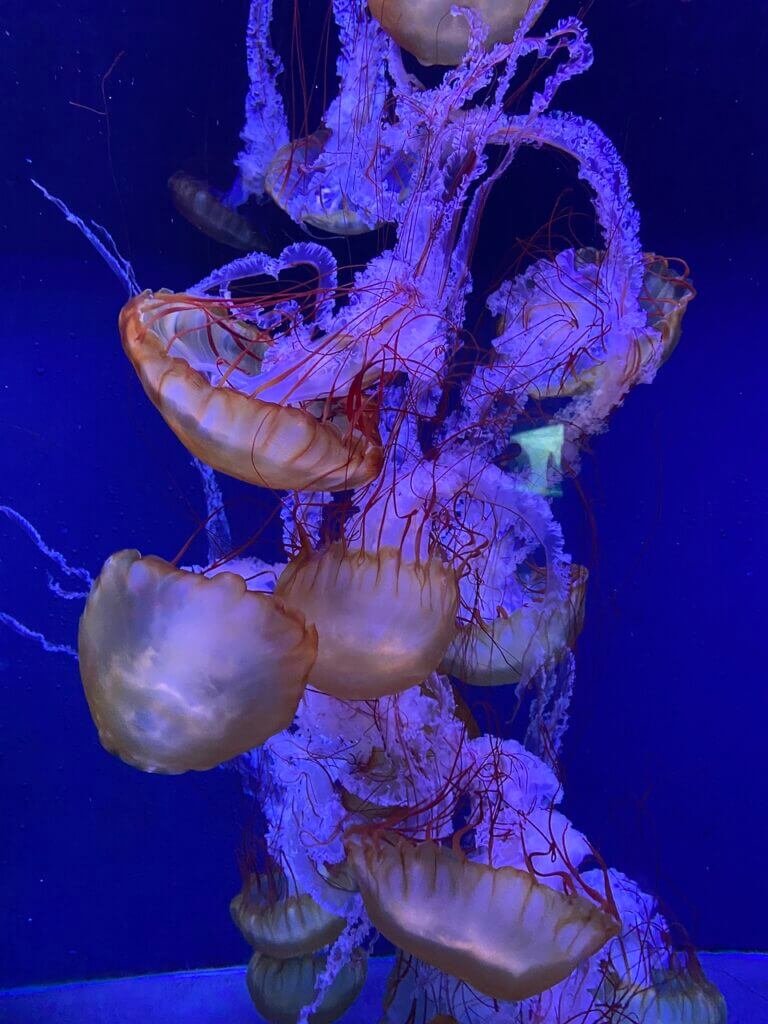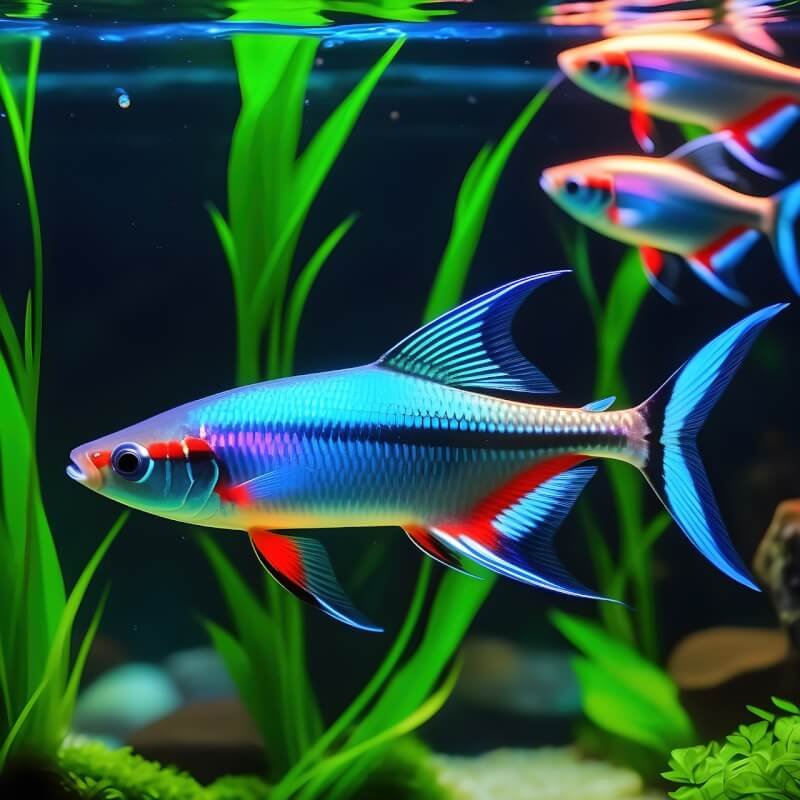Creating a natural-looking aquarium landscape is a delightful and rewarding process that allows you to transform your fish tank into a serene underwater paradise. From selecting the right plants and rocks to harmonizing colors and recreating natural habitats, this article will guide you through the steps to achieve an aquarium that not only captivates your fish but also brings a sense of tranquility to your living space. So grab your imagination and let’s dive into the world of aquatic design!
Choosing the Right Aquarium
When it comes to choosing the right aquarium, there are a few factors to consider. The first thing to think about is the size and shape of the tank. The size of the tank will depend on the space you have available and the number of fish you plan to keep. It’s important to provide enough space for your fish to swim and thrive.
In addition to size, the shape of the aquarium can also have an impact on the overall aesthetic. There are various shapes to choose from, such as rectangular, square, or even cylindrical tanks. Each shape offers a different viewing perspective and can complement different types of aquatic scapes.
Another consideration when selecting an aquarium is the material and style. The most common materials used for aquariums are glass and acrylic. Glass tanks are durable and scratch-resistant, while acrylic tanks are lightweight and offer better insulation. As for style, modern aquariums often come with sleek designs, but you can also opt for more traditional or custom-made tanks to suit your personal preference.
Lastly, researching the water requirements is crucial before setting up an aquarium. Different fish species have specific water parameter needs, including temperature, pH level, and water hardness. By choosing fish species that have similar water requirements, you can create a healthier and more balanced aquatic environment for your aquarium.
Selecting the Appropriate Substrate
Choosing the right substrate is essential for both the aesthetic appeal of your aquarium and the overall health of the fish and plants. Substrate refers to the material placed at the bottom of the tank, which can vary from gravel and sand to specialized substrates designed for planted tanks.
When deciding on the type of substrate, it’s important to consider the needs of your fish and plants. For example, some fish prefer a sandy substrate, while others may thrive with gravel. Similarly, certain plants may require specific types of substrate to grow properly, such as nutrient-rich substrates for root feeding plants.
Once you have decided on the type of substrate, determining the quantity is crucial. The general rule of thumb is to have a layer of substrate that is around 2 inches deep. This depth provides ample space for the plant roots to establish themselves while allowing sufficient water flow for the filtration system.
Before adding the substrate to the aquarium, it’s crucial to prepare and clean it thoroughly. This involves rinsing the substrate with water to remove any dust or debris. It’s also advisable to soak the substrate before adding it to the tank to prevent cloudiness in the water. By preparing and cleaning the substrate properly, you can ensure a clean and healthy environment for your aquarium inhabitants.

Installing a Proper Filtration System
A proper filtration system is vital for maintaining a healthy and thriving aquarium. Filtration plays a crucial role in removing debris, waste, and harmful chemicals from the water, ensuring a clean and stable environment for your fish and plants.
Understanding the importance of filtration is the first step in selecting the right filter type. There are three main types of filtration: mechanical, biological, and chemical. Mechanical filtration removes solid particles from the water, biological filtration breaks down toxic ammonia and nitrite produced by fish waste, and chemical filtration helps to remove impurities and odors.
When choosing a filter, it’s essential to consider the size of your tank and the filtration needs of your fish and plants. The filter should have a sufficient flow rate to cycle the entire volume of water in the tank at least four times per hour. It’s also important to choose a filter that is easy to install and maintain, as regular maintenance is key to keeping the filter functioning effectively.
To install the filter, follow the manufacturer’s instructions and ensure that the filter media, such as filter pads and activated carbon, are properly placed. Regular maintenance includes cleaning or replacing the filter media as needed and checking the filter for any signs of damage or clogging. By installing and maintaining the right filtration system, you can keep your aquarium water clean and clear, providing a healthy habitat for your aquatic friends.
Adding Aquatic Plants
Aquatic plants not only enhance the visual appeal of your aquarium but also provide numerous benefits to the overall ecosystem. They oxygenate the water, absorb excess nutrients, and provide shelter and spawning grounds for fish.
Choosing the right plants for a natural look is essential to create a balanced aquatic environment. Consider selecting a variety of plant species with different heights, leaf shapes, and textures. This diversity mimics the natural habitat of fish and adds depth and visual interest to your aquarium.
Arranging the plants according to their natural habitat is another important aspect of creating a natural-looking aquatic landscape. Some plants prefer to be rooted in the substrate, while others can be attached to rocks or driftwood. By understanding the natural requirements of each plant species and arranging them accordingly, you can achieve a more natural and visually appealing layout.
To ensure the healthy growth of your aquatic plants, provide them with adequate lighting and nutrition. Different plants have different lighting requirements, so it’s essential to choose appropriate lighting fixtures that provide the right intensity and spectrum. Additionally, consider using liquid fertilizers or root tabs to provide essential nutrients for the plants.

Incorporating Decorative Materials
In addition to aquatic plants, incorporating decorative materials can further enhance the natural look of your aquarium. Natural rocks, such as lava rocks and river stones, can be used to create caves, crevices, and hiding spots for fish. Driftwood adds a touch of authenticity and provides additional areas for fish to explore and hide.
When using rocks and driftwood, arrange them in a way that creates a natural layout. Mimic the way these materials would be found in a natural aquatic environment, such as arranging larger rocks in the background and smaller rocks in the foreground. This layered approach adds depth and dimension to your aquascape, creating a more visually pleasing and natural habitat for your fish.
It’s important to consider the impact decorative materials may have on water parameters. Some rocks and driftwood may release tannins or alter water chemistry, affecting pH and water hardness. Research the compatibility of the materials with the specific needs of your fish and adjust the setup accordingly, if necessary.
Installing Aquarium Lighting
Aquarium lighting serves two purposes in an aquarium: to illuminate the tank for viewing pleasure and to provide the light energy needed for the growth of plants and the well-being of fish.
Understanding the different types of lighting available is the first step in installing appropriate lighting for your aquarium. There are three main types of lighting: fluorescent, LED, and metal halide. Each has its own advantages and suitability depending on the specific needs of your tank.
To determine the appropriate lighting intensity, consider the needs of your plants and the requirements of your fish. Different plant species have varying light requirements, ranging from low to high lighting. Similarly, different fish species may have specific lighting needs. It’s important to strike a balance between providing adequate light for plant growth while ensuring the well-being and comfort of your fish.
Setting up light timers is crucial for maintaining a consistent lighting schedule. Most aquarium plants and fish thrive when they have a consistent day and night cycle, similar to their natural environment. Light timers allow you to automate the lighting schedule, ensuring that the aquarium receives the appropriate amount of light each day without the need for manual adjustments.
Maintaining Proper Water Parameters
Maintaining proper water parameters is vital for the health and well-being of your fish and plants. By monitoring water temperature and pH level, you can create a stable and comfortable environment for your aquarium inhabitants.
Investing in a reliable thermometer is essential for monitoring water temperature. Different fish species have different temperature requirements, so it’s important to choose fish that can thrive in the temperature range provided by your aquarium setup. Regularly check the temperature and make adjustments if necessary to ensure that it remains within the suitable range for your fish.
pH level is another critical parameter to monitor. Most freshwater fish thrive in a slightly acidic to neutral pH range. It’s important to test the pH of the water regularly and make adjustments if necessary, using pH-reducing or pH-raising agents depending on the needs of your fish.
Water hardness is another factor to consider. Hardness refers to the mineral content in the water, primarily calcium and magnesium. Some fish species prefer soft water, while others thrive in harder water. Test the water hardness regularly and adjust if needed by using additives or filtration systems designed to alter water hardness.
Maintaining a Balanced Aquatic Ecosystem
To maintain a balanced aquatic ecosystem, regular water changes and cleaning are crucial. Regular water changes help to remove accumulated toxins, waste, and excess nutrients from the water, keeping it clean and healthy for your fish and plants.
Monitoring the nitrogen cycle and ammonia levels is an essential part of maintaining a healthy ecosystem. The nitrogen cycle is the process by which toxic ammonia is converted into less harmful compounds. Regularly test the water for ammonia levels to ensure that the nitrogen cycle is functioning properly. If ammonia levels are high, taking corrective measures such as adjusting the filtration system or reducing fish load may be necessary.
Maintaining a healthy fish and plant balance is also important for the overall well-being of the aquarium. Overstocking the tank can lead to poor water quality and increased stress on the fish. It’s important to research the specific needs and requirements of each fish species and ensure that the tank can accommodate them comfortably.
Controlling Algae Growth
Algae growth is a common issue in aquariums, and controlling it is essential to maintain a clean and visually appealing tank. Understanding the causes of algae bloom is the first step in preventing its growth.
Algae bloom is often caused by excess nutrients in the water, primarily nitrates and phosphates. These nutrients fuel the growth of algae, resulting in cloudy water, green or brown algae patches, and reduced water clarity. To prevent algae growth, it’s crucial to control the nutrient levels in the water.
Implementing strategies such as regular water changes, reducing feeding amounts, and using algae-eating fish or invertebrates can help keep algae under control. Additionally, maintaining a consistent lighting schedule and avoiding prolonged exposure to direct sunlight can also help prevent algae growth.
In the event that algae does appear, it’s important to remove it safely and effectively. There are various methods for algae removal, including manual removal with a net or brush, using algae-eating snails or shrimp, or using chemical treatments. Choose the method that is least disruptive to the overall balance of the aquarium and follow the instructions carefully to ensure the safety and well-being of your fish and plants.
Creating Natural Aquascapes through Aquascaping Techniques
Aquascaping is the art of creating visually appealing and natural-looking aquarium landscapes. By utilizing various techniques, you can transform your aquarium into a stunning aquatic masterpiece.
Utilizing the rule of thirds and the golden ratio is one technique to create a well-balanced and visually pleasing aquascape. The rule of thirds involves dividing the tank into vertical and horizontal thirds and placing key elements, such as focal points or plants, at the intersection points. This creates a sense of balance and harmony in the layout.
Developing focal points and perspective is another essential aspect of aquascaping. By placing unique or eye-catching elements at specific locations, you can draw attention and create visual interest. Additionally, incorporating depth through different levels of height and using perspective techniques, such as placing smaller plants in the foreground and larger plants in the background, adds a sense of depth and realism to your aquatic landscape.
Enhancing depth and creating visual paths are techniques that can add a sense of space and movement to your aquascape. By arranging plants, rocks, or driftwood in a way that leads the viewer’s eye along specific paths, you can create a more dynamic and interesting layout. This technique mimics the natural flow of water and adds a sense of movement to the overall design.
In conclusion, creating a natural-looking aquarium landscape involves careful consideration of various factors, from choosing the right aquarium size and shape to selecting appropriate substrate and incorporating decorative materials. Understanding the water requirements of your fish and plants, installing proper filtration and lighting systems, and maintaining proper water parameters are essential for a healthy and balanced aquatic ecosystem. By implementing aquascaping techniques and controlling algae growth, you can transform your aquarium into a captivating and visually stunning underwater paradise.


